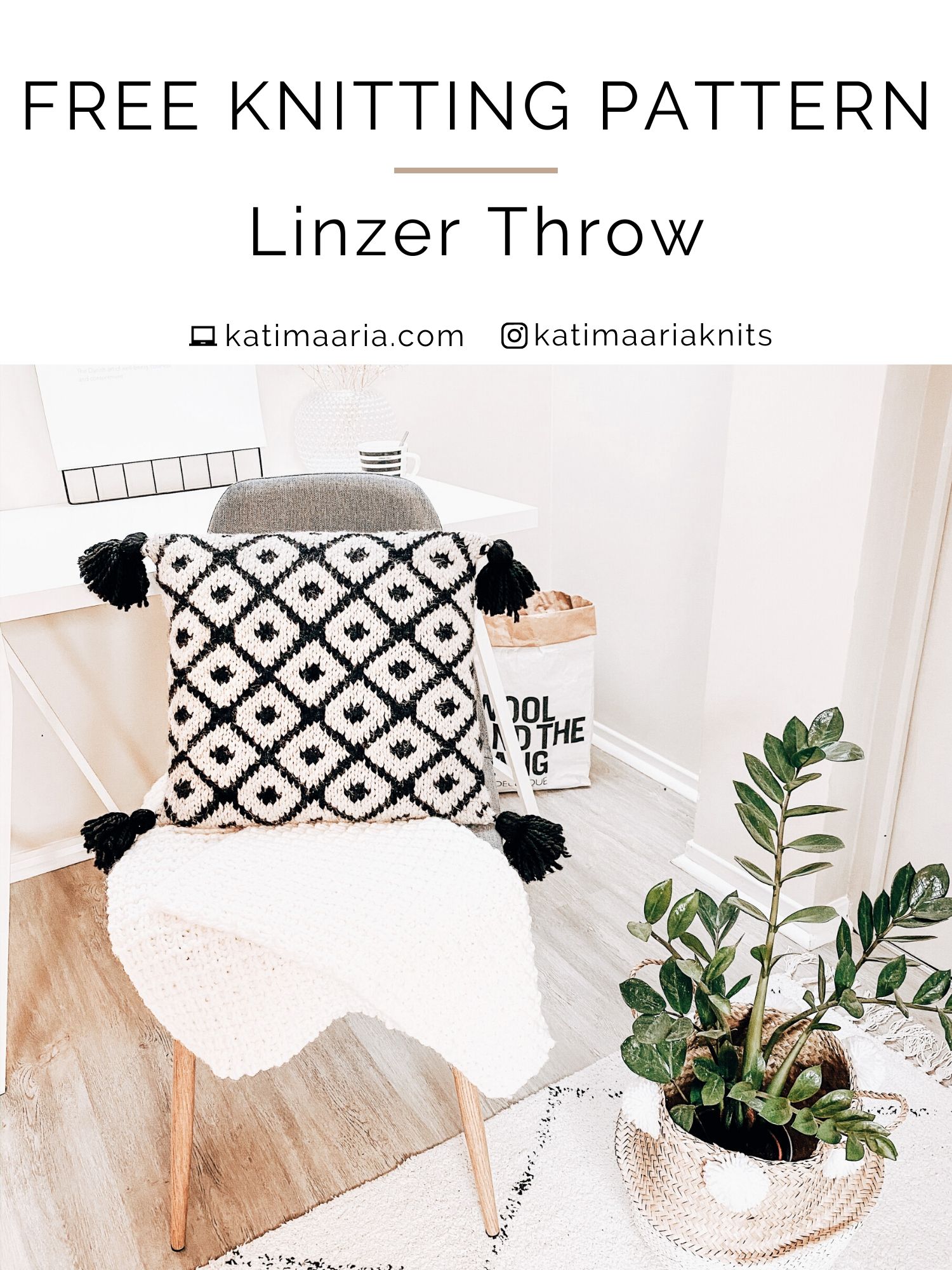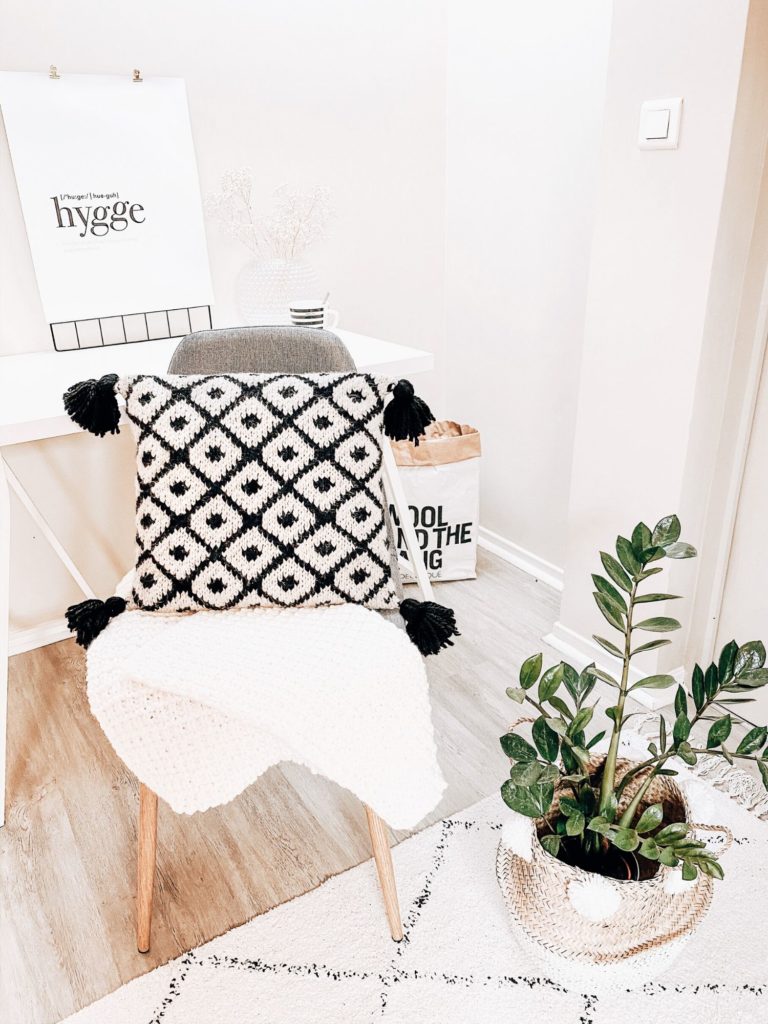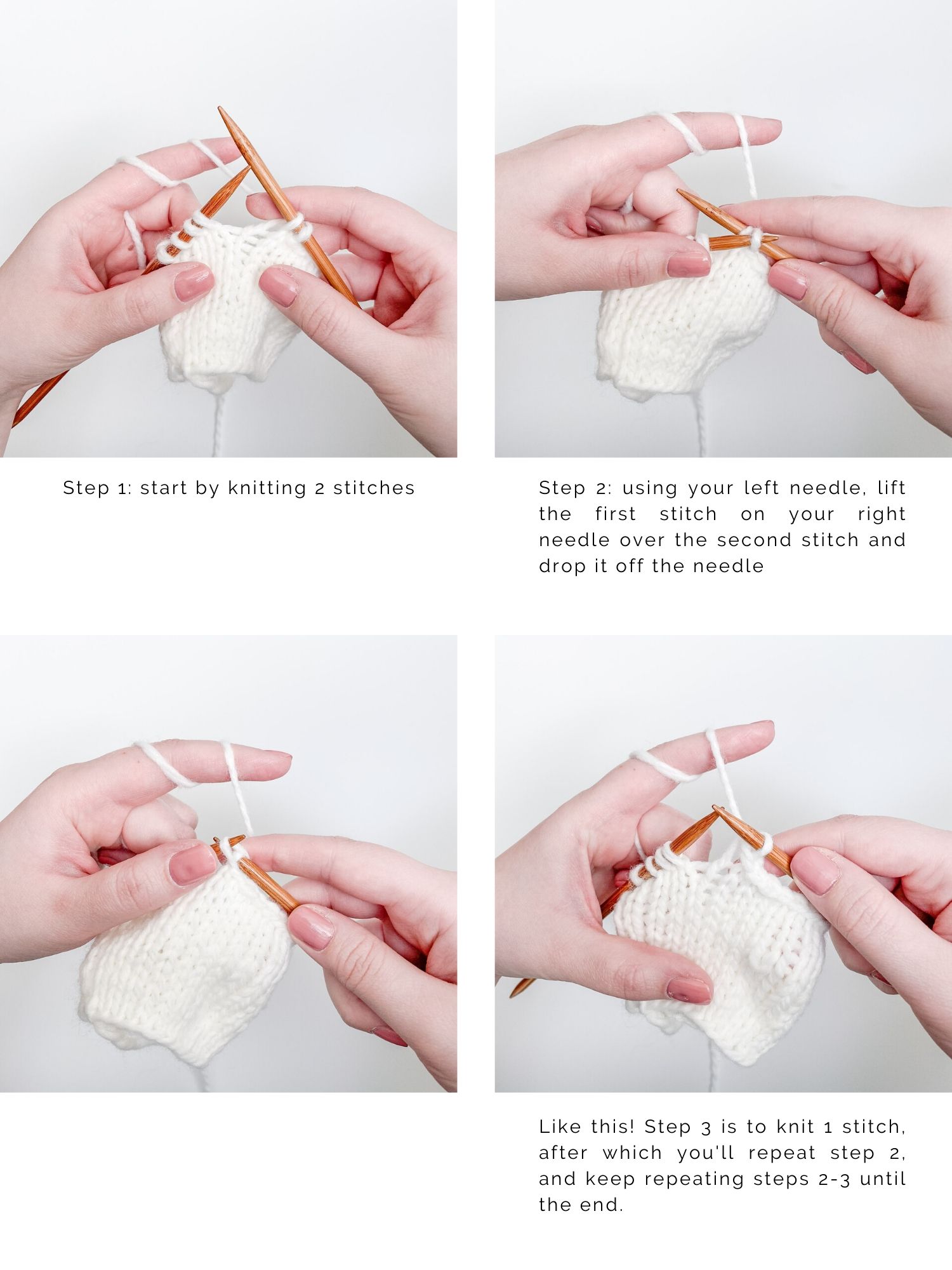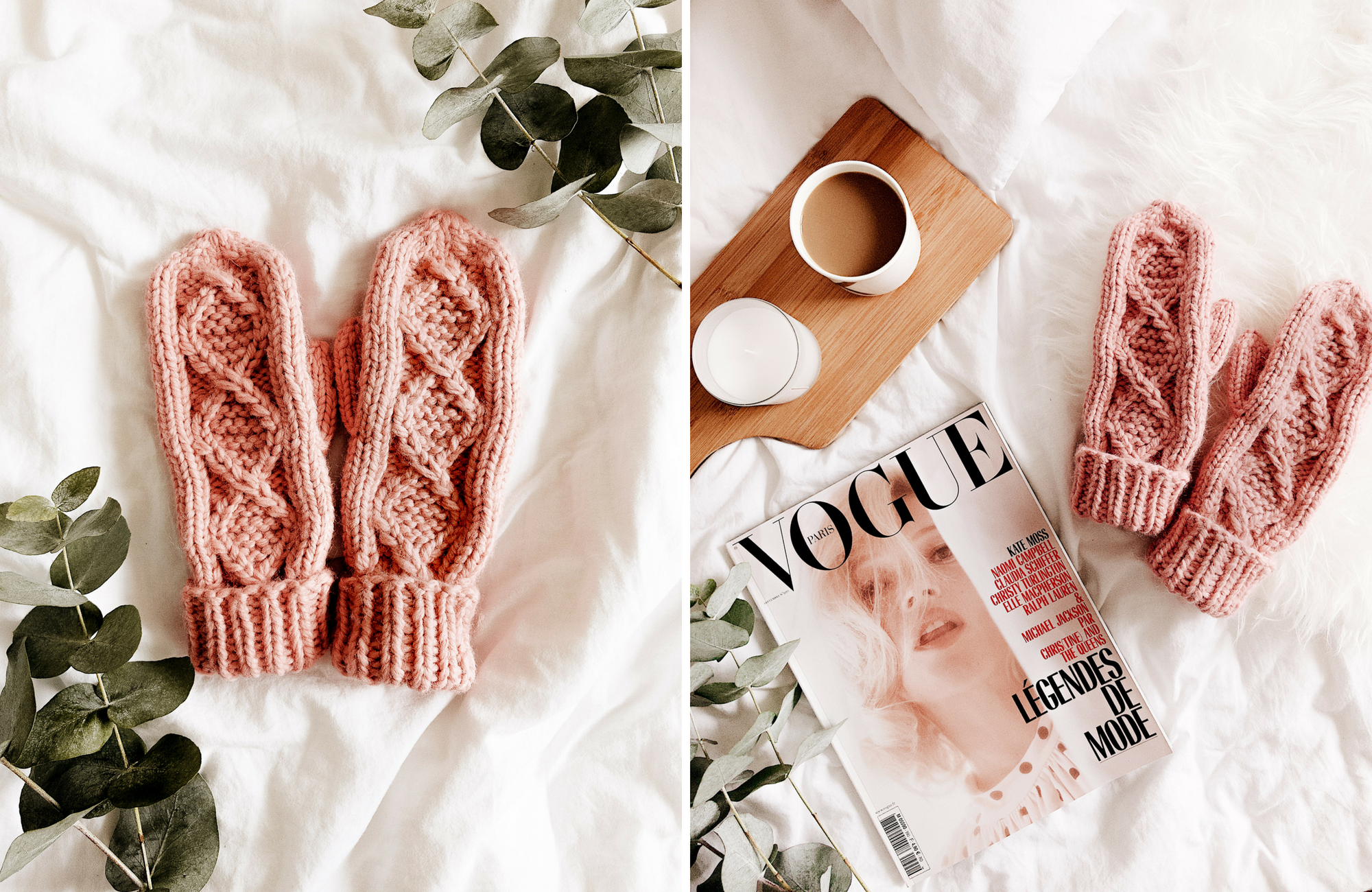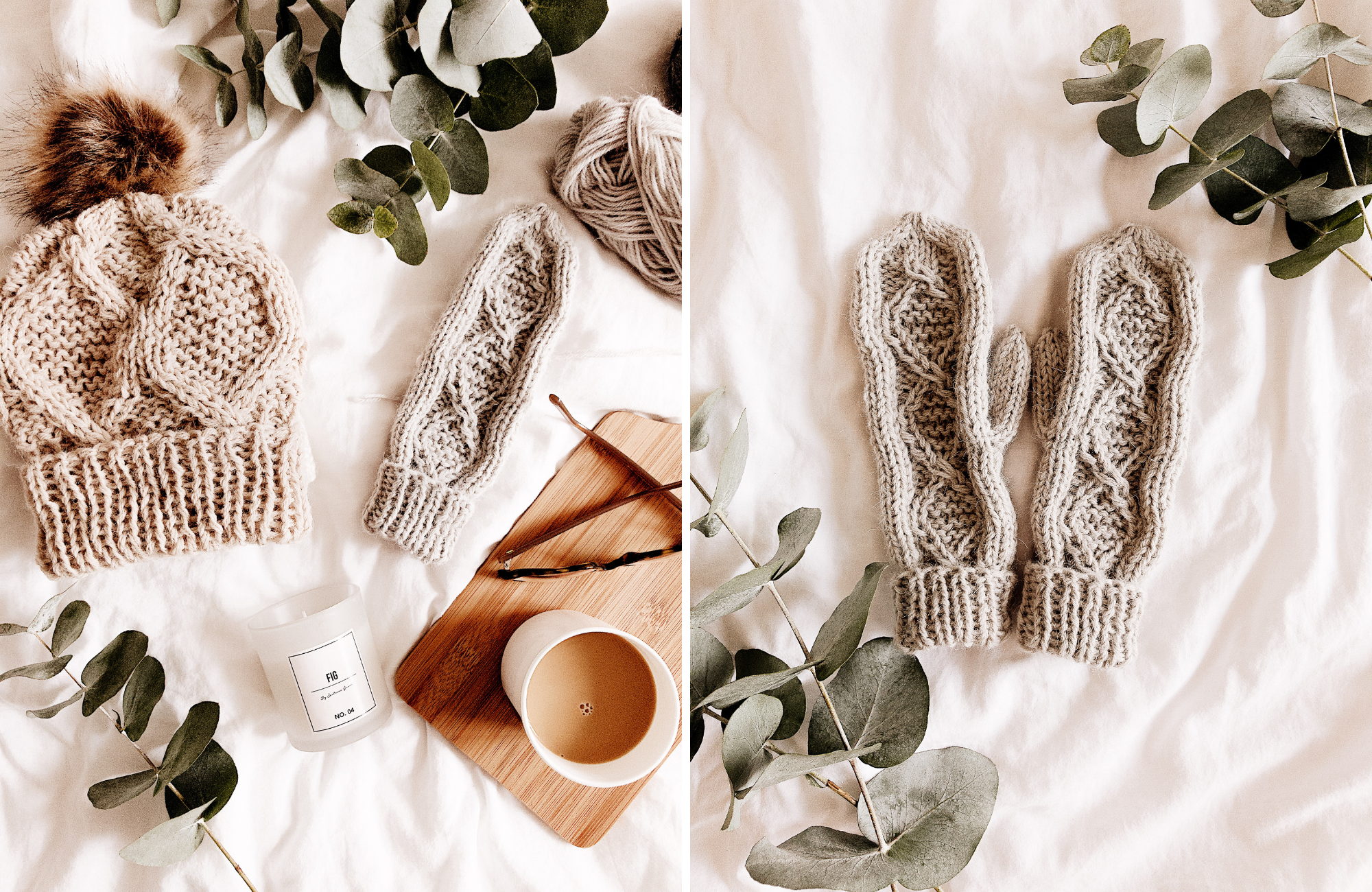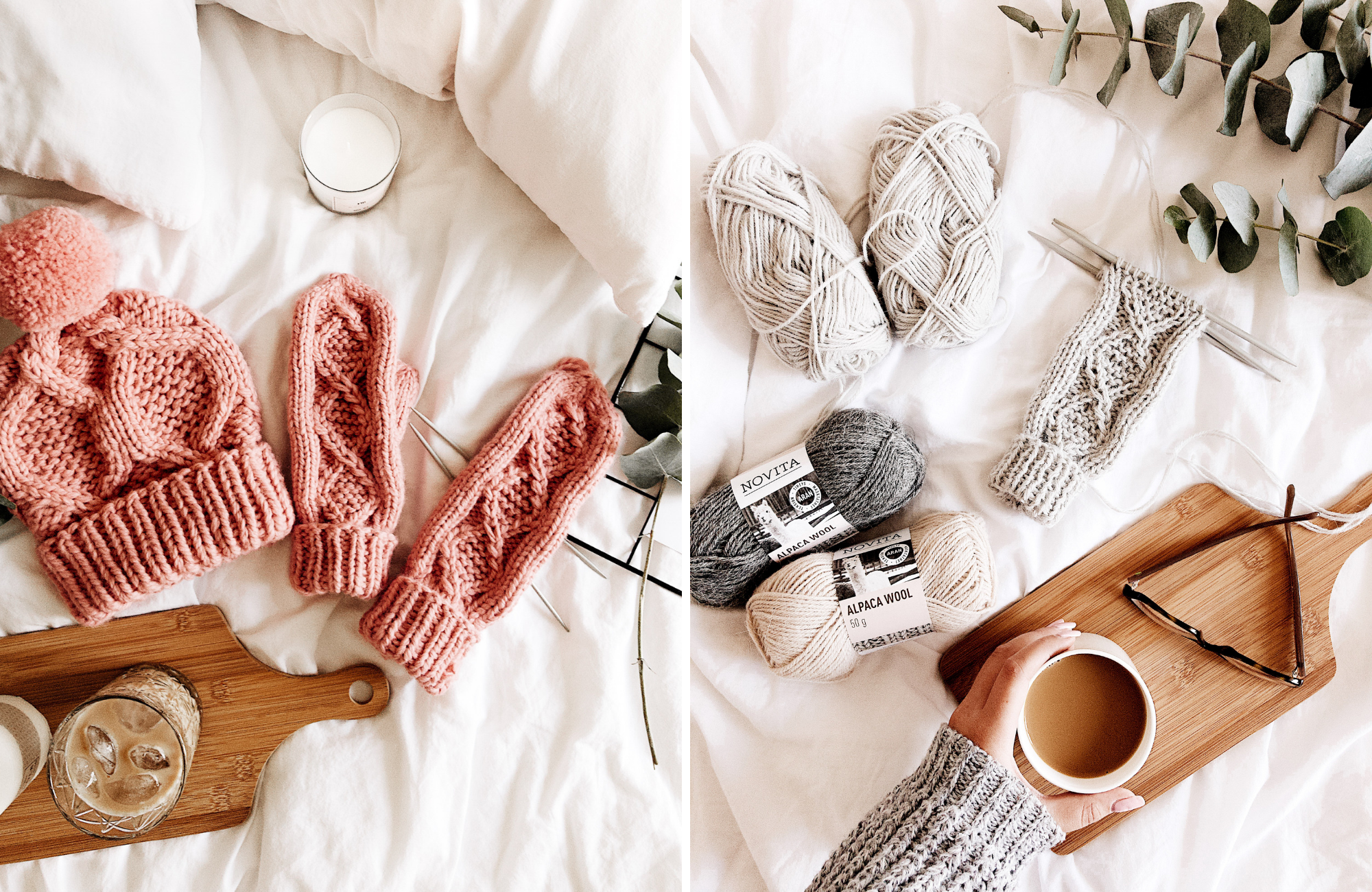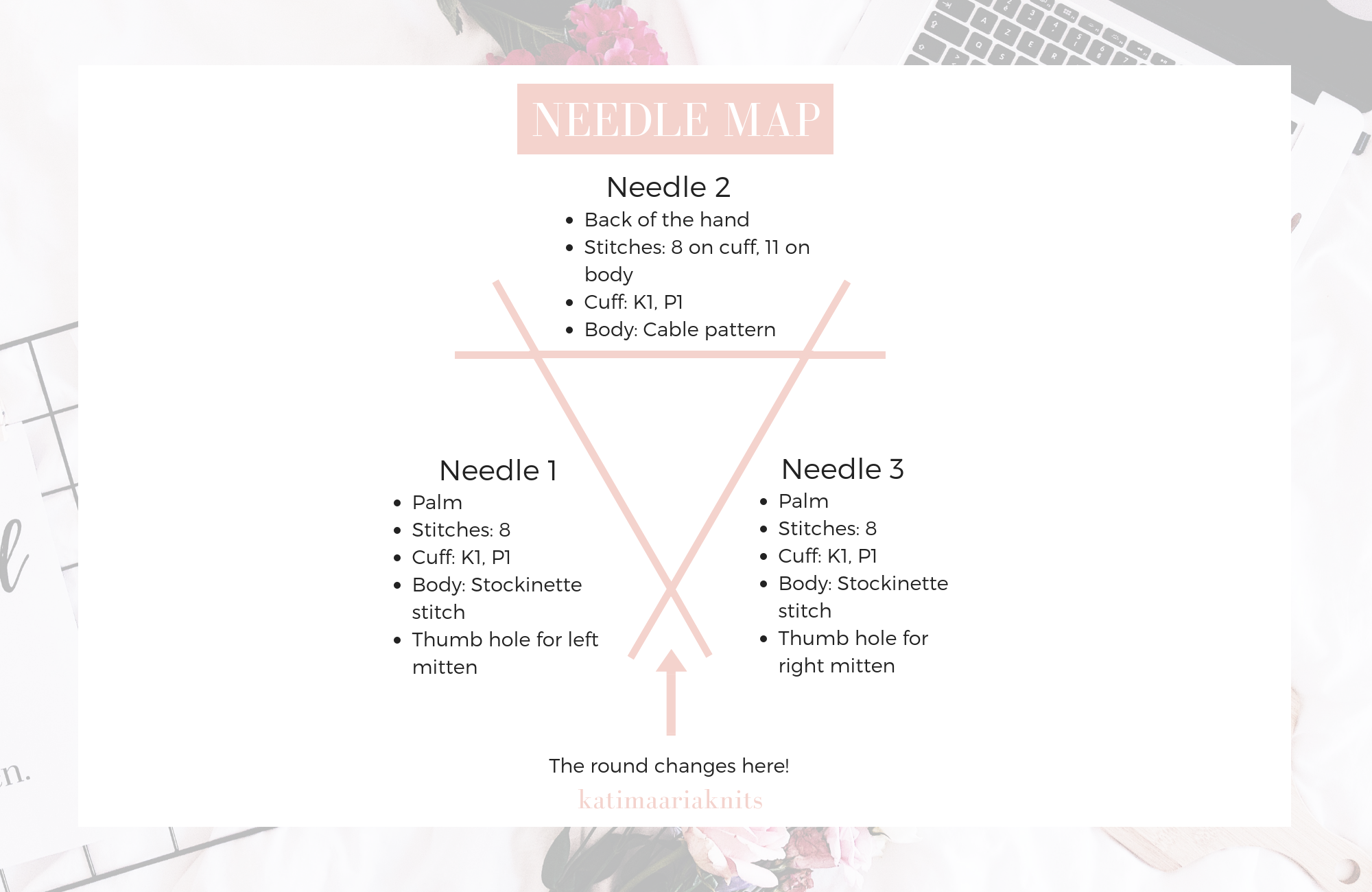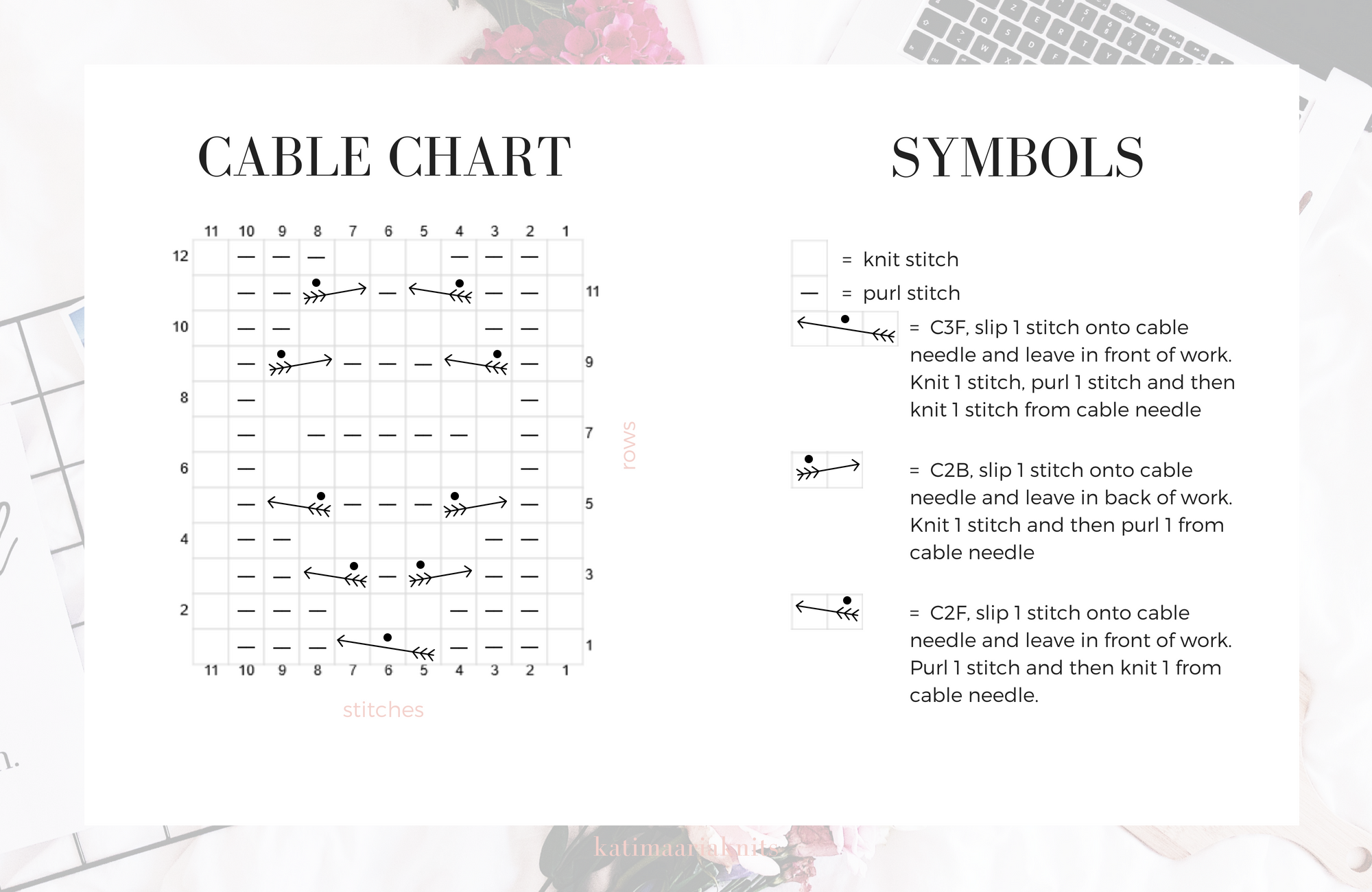Hi friends! When I say this design has been in the making for the past forever, forever being exactly one year, I’m definitely not joking. So after one year of originally writing and even having the pattern tested, I’d like you to finally meet the Linzer Throw Pillow!

This bohemian pillow is knit with bulky weight (category 5) yarn, 8mm/US 11 circular needles and it’s worked in the round which means you’ll be knitting stockinette stitch throughout the work and only seaming two openings (a big yes to this right)! The pattern also comes with two alternatives: a fair isle version with 2 colors, and a textured version with 1 color!

Should you have any questions about the pattern, you can always send me a message on Instagram or an email at kati@katimaaria.com
Use the hashtag #linzerthrow and tag me @katimaariaknits if you share a picture of the design on Instagram – this way I won’t miss it!
So without further ado, get your needles & yarn ready and happy knitting!
MEASUREMENTS
One size: 40x40cm / 16×16 inches
MATERIALS
- 8mm/US 11 circular needles (60cm/24″) OR any needles to obtain the gauge
- Approximately 163m/178 yards (main color) and 98m/107 yards (contrast color) of bulky weight (category 5) yarn
- Yarn recommendations:
- Color Made Easy by Lion Brand Yarn
- Phil Looping by Phildar
- Gauge: 10x10cm/4×4″ of stockinette stitch in fair isle with 8mm/US 11 needles = 14 stitches, 14 rounds
- Tapestry needle
- 40x40cm/16×16″ pillow
- Optional: extra yarn for tassels
ABOUT THE PATTERN
This pillow is knit in the round and only consists of stockinette stitch (all stitches are knit). Knitting in the round makes the seaming a breeze – you’ll only need to seam together the cast-on edge and the bind-off edge!
The fair isle pattern is a 14-stitch, 14-round repeat. The 14-stitch chart is knit 8 times per round, adding up to a total of 112 stitches in the pillow. The 14 rounds are knit for a total of 4 times, which means you’ll be knitting 56 rounds.
The longest floats in the pattern are 8 stitches so make sure you catch them and don’t make floats longer than 5 stitches! Personally, I catch floats already every 3rd stitch – I’ve found it to be a good “rhythm” for my tension while working with two different colors.
Pattern alternative: you can also make this throw pillow using only one color and, instead of working the chart with two colors, purling all the contrast color stitches. This version of the pattern was created by one of my amazing testers, Tara from Knits by Tara, and it’s absolutely brilliant!

CHART OVERVIEW
Here’s a 56-stitch x 56-round overview of the pattern – I think it gives a better overall idea of how the fair isle is going to look like once the pillow is finished! The stitch count in this chart is half the stitches of the work and the round count is complete, including all 56 rounds.
Click the image to open it bigger!
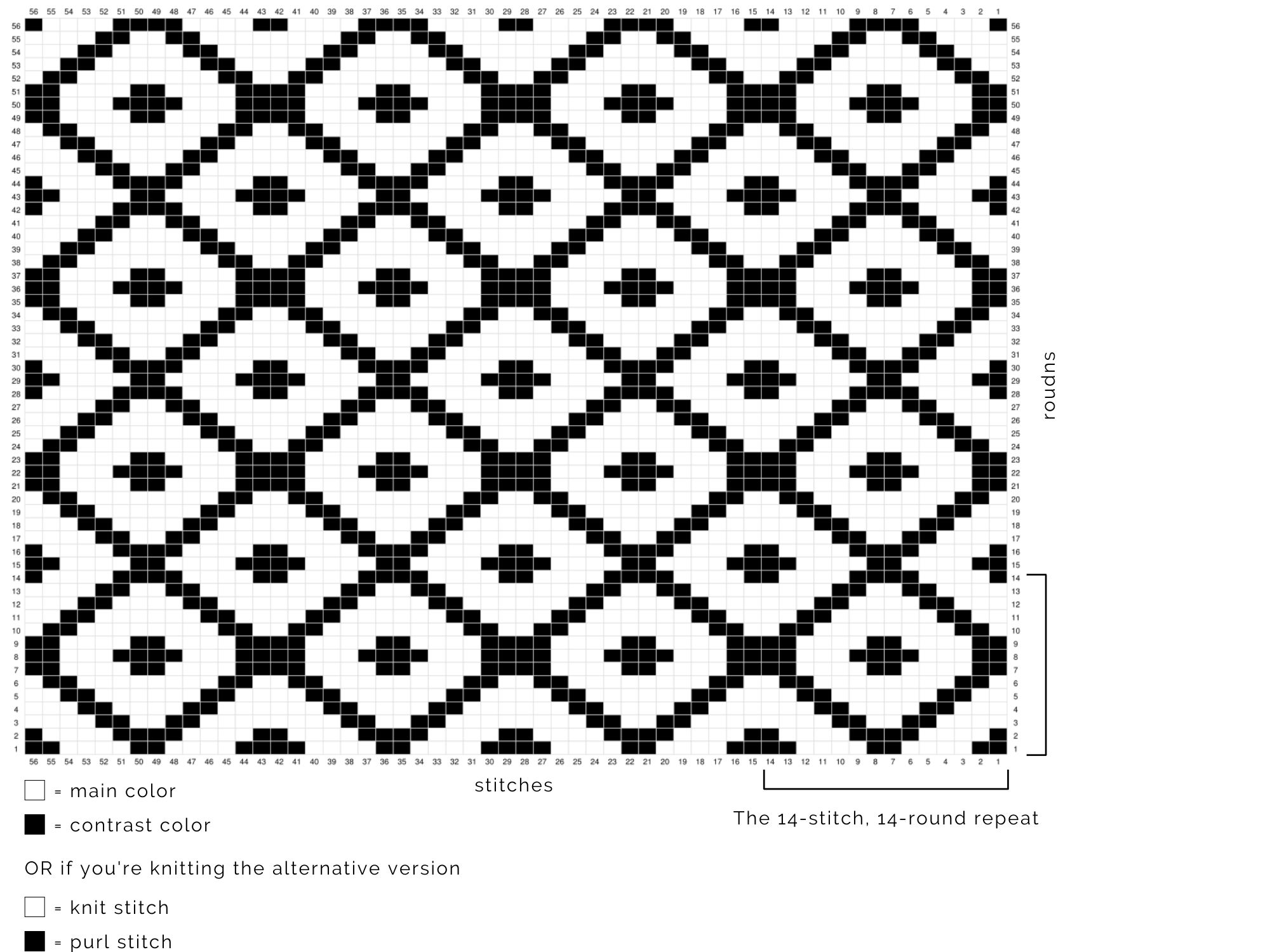
INSTRUCTIONS
Cast on 112 stitches on your 8mm / US 11 circular needles (60cm/24”) using the main color. Make sure you leave a long tail; you’ll be using it to close the opening.
Join the work in the round and knit 1 round in stockinette stitch with the main color before starting the fair isle pattern.
Click the image to open it bigger!
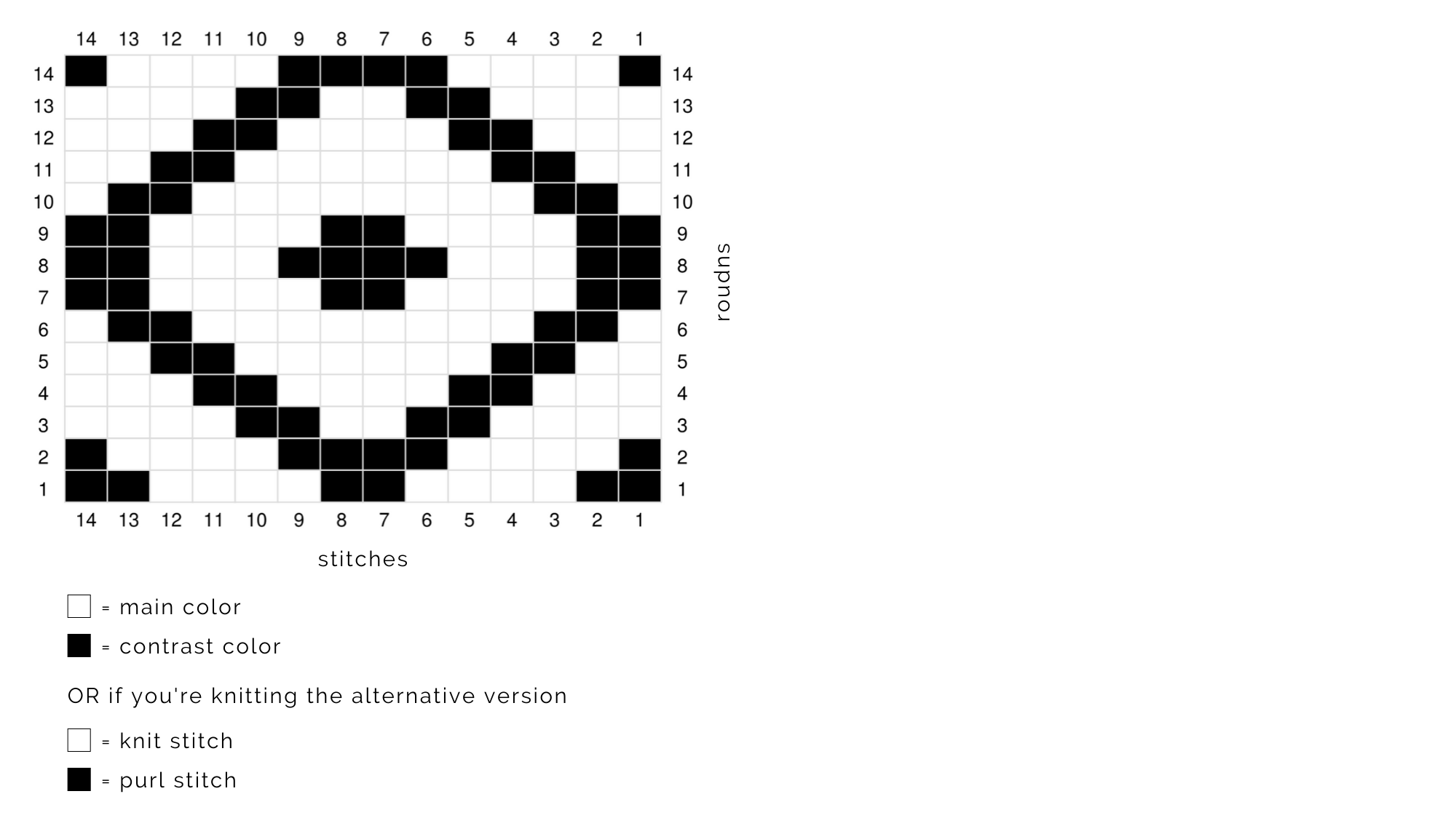 Follow the 14-stitch knitting chart (the chart is knit 8 times per round, 8 x 14 sts = 112 sts), and knit rounds 1-14.
Follow the 14-stitch knitting chart (the chart is knit 8 times per round, 8 x 14 sts = 112 sts), and knit rounds 1-14.
Repeat the chart rounds 1-14 another 3 times, knitting them a total of 4 times for the pillow (56 rounds).
Finish by knitting 1 round of stockinette stitch using the main color before binding off.
BINDING OFF
Step 1: Knit 2 stitches
Step 2: Using your left needle, lift the first stitch on your right needle over the second stitch and drop it off the needle
Step 3: Knit 1 stitch
Keep repeating steps 2-3 until 1 stitch remains.
Cut the yarn leaving a long tail (you’ll use this tail to seam together the bind-off edge), pull the tail through the remaining stitch, thread through the very first stitch that was bound off in the beginning to close the round and pull gently to secure the work.
In these tutorials, I’m using a small test piece just to show you the techniques!
Click the image to open it bigger!
SEAMING
To seam your pillow, you’ll be using the mattress stitch that creates an invisible horizontal seam.
Before starting, make sure the right side of your pillow is facing up (and that it’s not inside out).
The part where your round changed should be on the side of the pillow: this way, it’ll be less visible and you’ll be able to seam with the long tails that were left after casting on and binding off.
Align the pillow so that the fair isle pattern matches on both sides.
You can start either at the cast-on or bind-off edge.
The mattress stitch: thread the yarn under the horizontal stitches that you’ll find at the stem of the cast-on/bind-off edges. Pick up one stitch per edge at a time and move between the edges, always threading under matching stitches. Continue until you have seamed the opening and secure the tail by weaving in on the wrong side.
Click the image to open it bigger!
If you want to add tassels, attach them at this point before inserting the pillow (this way you can still secure the tassels by weaving in the ends on the wrong side).
Find a tutorial for making tassels here!
Insert a 40x40cm / 16×16” pillow and seam together the second opening using the mattress stitch.
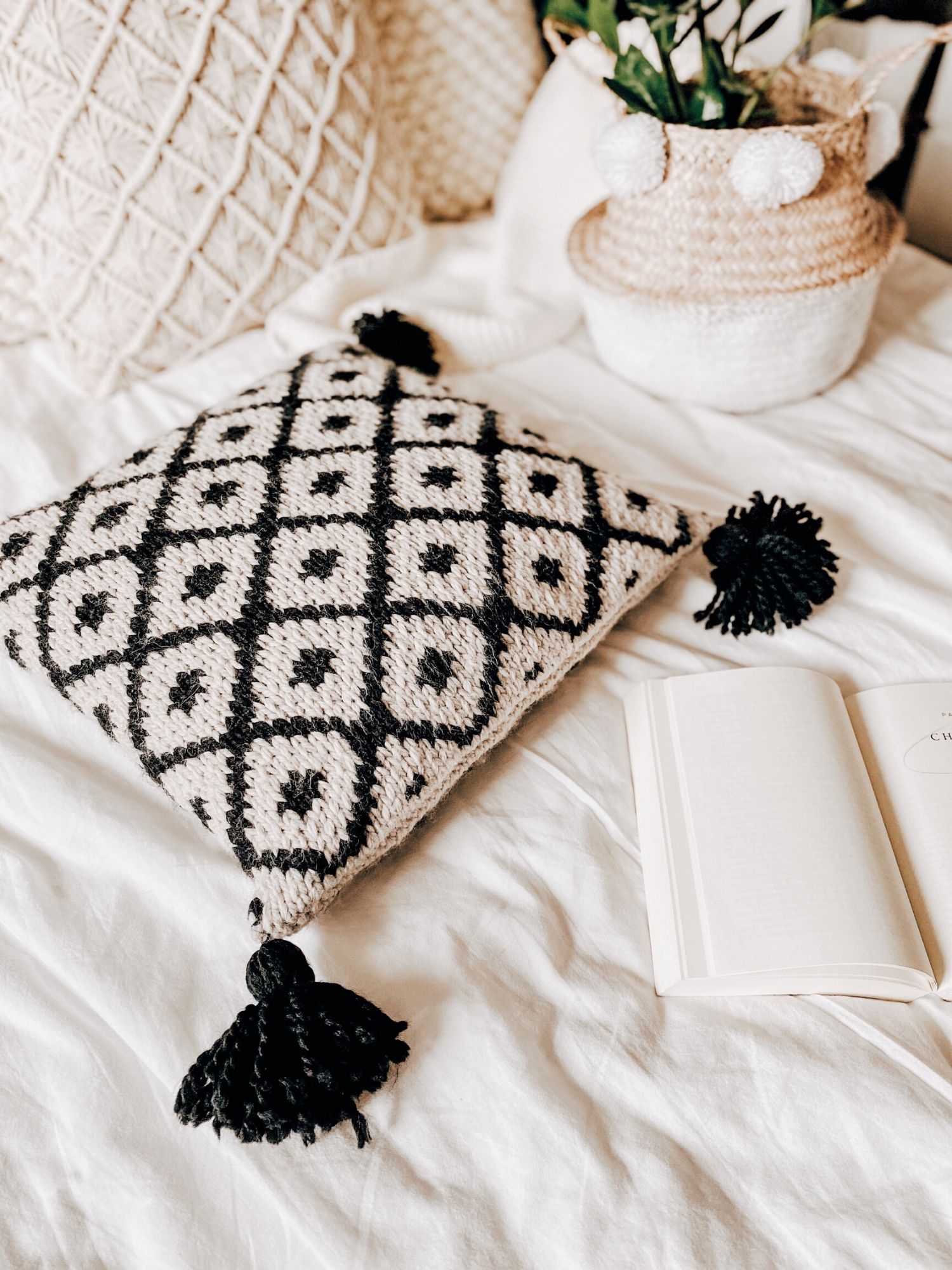
And voilà, your new throw pillow is now ready to make your home even cozier! I hope you enjoyed this pattern and will be returning to it in the future as well!
